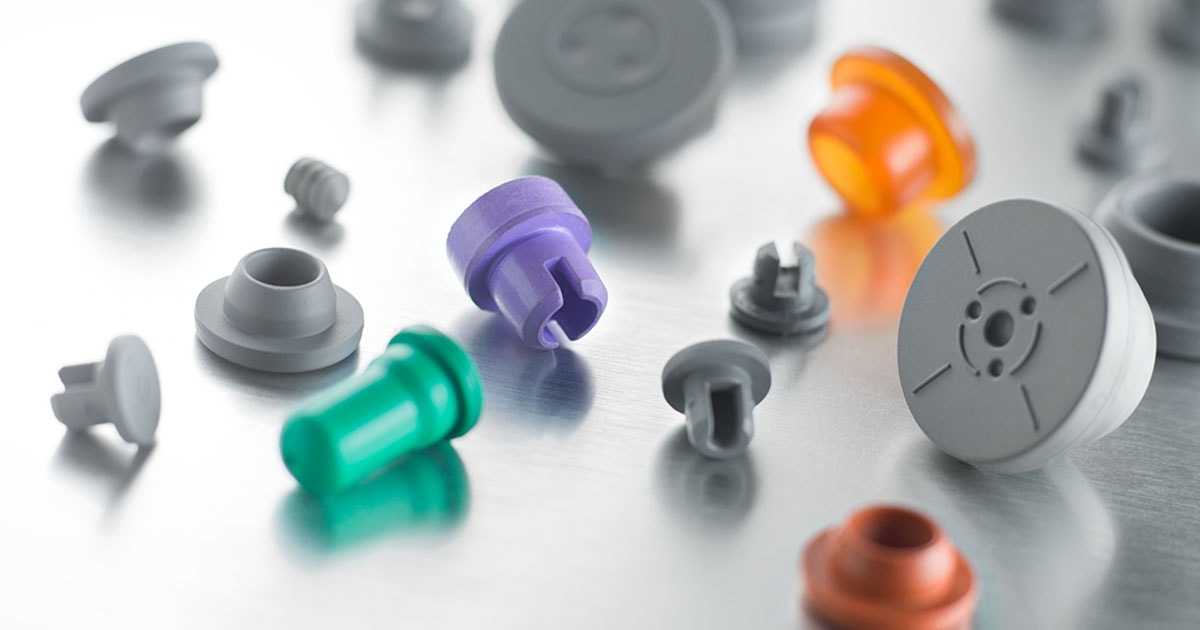Rubber stoppers are essential components in various industries, particularly in the pharmaceutical, medical, and food sectors. They are used to seal bottles, vials, and containers, ensuring that the contents remain secure, sterile, and free from contamination. The manufacturing of rubber stoppers involves several complex steps, from material preparation to molding and testing, to ensure that they meet the required specifications.
Contents
Materials Used in Rubber Stopper Production
The process of manufacturing rubber stoppers starts with selecting the right materials. Typically, rubber stppers are made from either natural rubber or synthetic rubber compounds. The specific type of rubber used depends on the desired properties of the stopper, such as its elasticity, resistance to chemicals, and sterility. Common materials include:
- Butyl Rubber: Known for its chemical resistance and impermeability, often used for pharmaceutical applications.
- Bromobutyl Rubber: A modified form of butyl rubber that offers better sealing properties and is commonly used for medical and pharmaceutical stoppers.
- EPDM (Ethylene Propylene Diene Monomer): Used for applications requiring resistance to heat and aging.
- Natural Rubber: Occasionally used for applications requiring more flexibility.
The rubber is mixed with additives such as vulcanizing agents, antioxidants, and fillers to achieve the right balance of elasticity, durability, and performance.
Step-by-Step Manufacturing Process of Rubber Stoppers
1. Rubber Compounding
The first step in manufacturing rubber stoppers is creating the rubber compound. This involves mixing raw rubber with various ingredients, such as curing agents, accelerators, and stabilizers. The purpose of compounding is to achieve the correct balance of properties, including:
- Elasticity: To ensure the rubber stopper will expand to fit the container and provide an effective seal.
- Chemical Resistance: To ensure the stopper can withstand exposure to various chemicals.
- Sterility: Particularly for pharmaceutical and medical stoppers, sterility is crucial.
The rubber compound is mixed using an internal mixer or banbury mixer, which ensures that the ingredients are thoroughly blended to form a homogeneous mixture.
2. Molding
Once the rubber compound is prepared, it is ready for molding. The molding process typically involves compression molding, injection molding, or transfer molding, depending on the complexity and shape of the rubber stopper. The most common method is compression molding, which consists of the following steps:
- Preparation of Molds: The molds are cleaned and prepared. Molds are made from durable materials like steel, designed to form the specific shape of the rubber stopper.
- Loading the Mold: A predetermined amount of rubber compound is placed into the mold cavity. The amount of rubber is critical to ensure that the stopper fits precisely without excess or shortage.
- Molding Process: The mold is heated to a specific temperature, causing the rubber compound to cure (vulcanize). This process involves the application of heat and pressure, which causes the rubber to solidify and take the shape of the mold.
- Curing Time: The mold is kept under heat and pressure for a defined period, which allows the rubber to cure fully. This process ensures that the rubber stoppers have the required hardness and elasticity.
3. Post-Molding Processing
After the rubber stoppers are removed from the molds, they undergo several post-molding treatments:
- Trimming: The rubber stoppers may have excess material (flash) around the edges. This is trimmed off using specialized cutting tools to ensure a smooth, uniform finish.
- Inspection: Each rubber stopper is visually inspected for defects such as uneven edges, air bubbles, or surface imperfections. Stoppers that do not meet the quality standards are discarded or reprocessed.
4. Curing and Vulcanization
The vulcanization process is critical to ensuring that the rubber stopper has the desired properties of strength, flexibility, and durability. In vulcanization, the rubber undergoes a chemical reaction with sulfur or other curing agents, cross-linking the rubber molecules to make the material more stable and resistant to wear and environmental factors. This process is carried out at a controlled temperature and pressure to achieve the right degree of curing.
5. Sterilization and Quality Control
Sterility is especially important for rubber stoppers used in pharmaceutical and medical applications, where contamination could jeopardize the safety of the products. The manufacturing process includes several quality control and sterilization steps:
- Sterilization: Depending on the intended use, rubber stoppers may undergo sterilization processes such as autoclaving (high-temperature steam sterilization) or gamma irradiation. This ensures that the stoppers are free from bacteria, viruses, and other contaminants.
- Inspection and Testing: After sterilization, rubber stoppers are subjected to a series of quality control tests, including:
- Dimensional checks to ensure consistency in size and shape.
- Sealability tests to ensure the stoppers provide an effective seal.
- Chemical resistance testing to ensure the stoppers do not react adversely with the contents of the containers.
- Elasticity and tensile strength tests to confirm that the rubber stoppers can withstand pressure and maintain their shape.
Only stoppers that pass these tests are approved for use.
6. Packaging and Distribution
Once the rubber stoppers have passed all inspections and quality control tests, they are carefully packaged to maintain their sterility and quality. The packaging is designed to protect the stoppers from contamination during transportation and storage. The stoppers are then distributed to pharmaceutical, medical, and other industries for use.
Injectable Components Manufacturer and Rubber Stoppers
In the pharmaceutical and medical industries, rubber stoppers play a vital role in ensuring the integrity and safety of injectable components. These stoppers are used to seal vials, syringes, and other containers that hold injectable drugs, vaccines, or biologics. Manufacturers of injectable components must adhere to strict regulatory standards and quality controls to ensure that the rubber stoppers used are of the highest quality and free from contaminants. Injectable components manufacturer focus on precision, sterility, and compatibility when producing rubber stoppers, as these stoppers must not only form a perfect seal but also maintain the stability of the contents inside the container. Given the critical nature of injectable drugs, ensuring that rubber stoppers meet rigorous standards for chemical resistance, durability, and performance is essential to guarantee the safety and efficacy of the treatments they contain.
Challenges in Rubber Stopper Manufacturing
While manufacturing rubber stoppers may seem straightforward, several challenges need to be addressed to ensure quality and performance:
- Material Variability: Rubber compounds can be sensitive to environmental conditions, so precise control over the material properties is crucial.
- Precision in Molding: Ensuring that rubber stoppers are molded precisely is essential for creating an effective seal. Even slight variations in size or shape can affect their performance.
- Contamination Prevention: Maintaining sterility is a critical aspect of manufacturing rubber stoppers, particularly for medical and pharmaceutical applications.
Conclusion
The manufacturing of rubber stoppers is a detailed and precise process that requires careful control of materials, molding techniques, and quality assurance. From compounding the rubber to sterilization and final packaging, each step in the process is designed to produce a reliable, effective product. With the proper attention to detail, rubber stoppers provide essential sealing solutions in a wide range of industries, ensuring safety, integrity, and effectiveness in the products they protect. As injectable components manufacturers rely heavily on the performance of these stoppers to maintain the safety and potency of injectable drugs, high standards for quality and precision are critical in the production of rubber stoppers.



